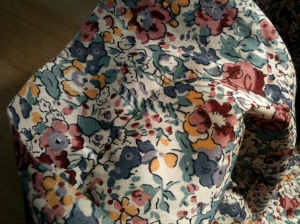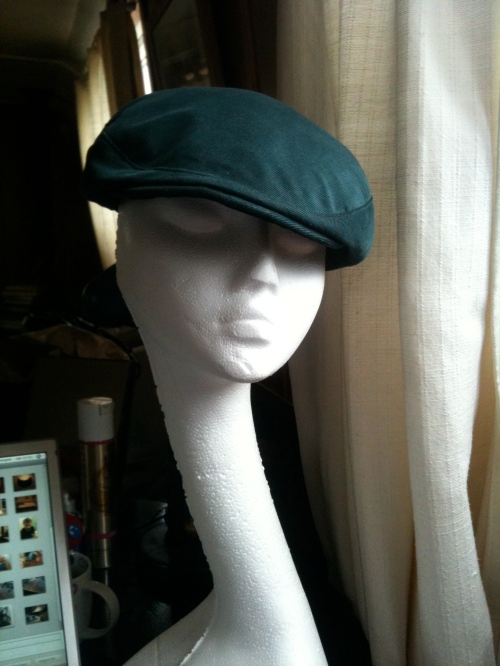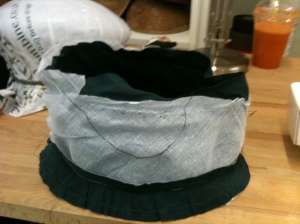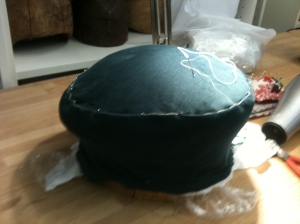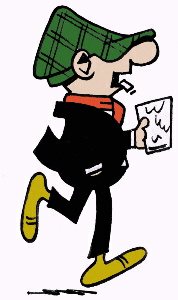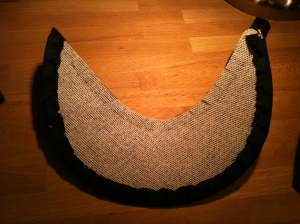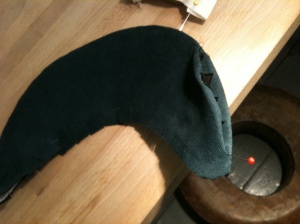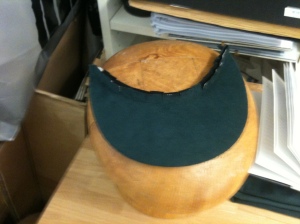Well, in typical millinery fashion, just when you get all excited that a hat is ready to finish, it turns out it’s nowhere near close to completion.
For my lining of the Jeff, I had chosen this very English Liberty print from the Tana Lawn collection.Pretty…
I had a few choices with the lining. Do a standard lining job – or block the lining to match the inside shape of the hat. Naturally, I went for blocking, which added a few hours onto the proceedings. As with the cord, the lining fabric was cut on the bias and blocked to the shape of the block used for the hat.
As with the fabric for the actual hat, the lining was blocked in two pieces, top and side – the two were stitched together on the sewing machine, and excess fabric cut off. It is important to remember when blocking the lining of your hat that you have to turn the fabric upside down, otherwise the ‘wrong’ side of the fabric will show on the inside of your finished hat.
I sewed the seams of the lining on the machine, and then placed it into the hat. Stitching the lining to the hat exterior was tricky – as the same block has been used for both, the two fabrics will not fit perfectly inside each other – the lining will always be a tad too big. So, when sewing, it’s best to just keep the fabrics as flat as possible against each other and take time as you sew to adjust, to avoid any big gathers in the fabrics, especially at the end.
Finally, after much perseverance, here is is!

